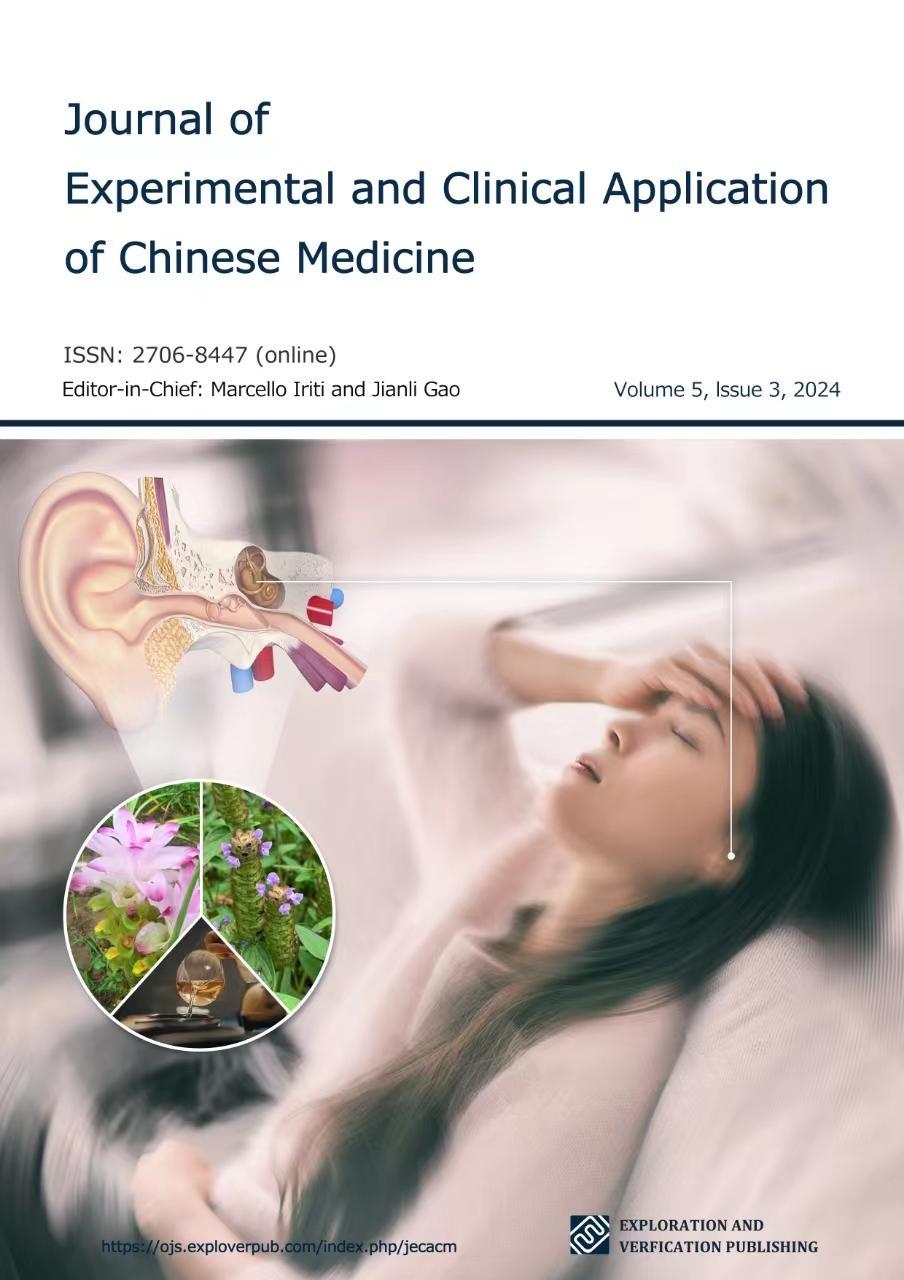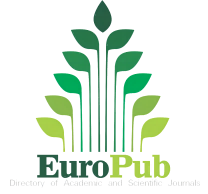The Therapy Based on Traditional Chinese Medicine for Otolithiasis
DOI:
https://doi.org/10.62767/jecacm503.0623Keywords:
dizziness, syndrome differentiation and treatment, otolithiasis, residual dizziness, recurrence rateAbstract
Background: Otolithiasis (also named benign paroxysmal positional vertigo, BPPV) is one of the most common illness for hospital visits. Residual dizziness and recurrence after reduction are problems for the treating BPPV with Western medicine. Traditional Chinese medicine (TCM) has shown obvious superiority in the treating BPPV. Here, we explore the curative effect of the theory of dizziness of TCM in treating BPPV. Methods: 183 BPPV patients were randomly divided into 3 groups: Reset group (RG) 61 cases, Traditional Chinese Medicine group (TG) 61 cases, and Reset plus Traditional Chinese medicine group (R+TG) 61 cases. RG received machine reset. TG was given the therapy based on the theory of dizziness of TCM. R+TG received machine reset plus the therapy of TCM. All patients, before and on 1th day, 7th day, and 14th day of treatment, were evaluated with the dizziness handicap inventory (DHI) for the physical (P), functional (F) and emotional (E) state. The efficacy of the different therapy in the treatment of mild, moderate, and severe BPPV has been observed. Follow up for 6 months, we record and compare the ratio of patients with residual dizziness and the recurrence of BPPV for the three groups. Serum levels of vitamin D, estrogen, and calcium and phosphorus ions were detected and compared between the groups of BPPV patients, dizziness non-BPPV patients, and non-dizziness patients. Results: The DHI score of the three groups, compared with which before treatment, RG (p < 0.05), TG (p < 0.01), and R+TG (p < 0.01), decreased significantly on the 7th day of treatment; R+TG decreased more significantly than RG (p < 0.05). The DHI scores of the three groups, on the 14th day of treatment, were significantly lower than those before treatment (p < 0.01). On the 7th day of treatment, compared with the same period of RG, the score of item E of TG and R+TG, decreased significantly (p < 0.05). Patients of mild BPPV responded well to the three kinds of the therapy; For the patients of moderate BPPV, on the 7th day of treatment, assessed by DHI, the effect showed significant improve for RG (p < 0.05), TG (p < 0.01) and R+TG (p < 0.01). For the patients of severe BPPV, on the 7th day of treatment, the effect of RG, assessed with DHI, showed no improvement (p > 0.05), while TG (p < 0.05) and RG+TG (p < 0.01) showed effective. The incidence of residual dizziness between the three groups show significantly different on the 2nd week (x2 = 7.635, p = 0.022) and the 1th month (x2 = 7.502, p = 0.023) of treatment; The incidence of RG was higher than those of TG and R+TG. The recurrence rates of BPPV of the three groups were significantly different on the end of 2nd month (x2 = 8.528, p = 0.014), 4th month (x2 = 13.287, p = 0.001), and 6th month (x2 = 12.587, p = 0.002) of treatment. The recurrence rates of TG and R+TG were lower than that of RG. There was no significant difference in recurrence rate and residual dizziness occurrence rate between TG and R+TG. There were differences in serum vitamin D and estrogen levels between the group of BPPV patients, dizziness non-BPPV patients, and non-dizziness patients; There was no difference in calcium and phosphorus ion levels between the three groups. Conclusions: Compared with therapy of RG, TG and R+TG showed more effective in treating BPPV; They can significantly improve patient's bad mood, reduce the proportion of residual dizziness, and reduce the recurrence rate. TCM and TCM plus reset have better efficacy in treating moderate and severe BPPV. The specificity of abnormal changes in serum vitamin D and estrogen for BPPV patients needs be further study.
References
Liu L, Peng RS, Zou SZ, et al. Analysis of short-term efficacy of repositioning maneuver in benign paroxysmal positional dizzi ness patients with atypical nystagmus. Beijing Medical Journal 2022; 44(8): 703-707.
Li JF, Dong H. A review on benign paroxysmal positional dizziness. Clinical Journal of Chinese Medicine 2017; 9(30): 1-4.
Acar B, Karasen RM, Buran Y. Efficacy of medical therapy in the prevention of residual dizziness after successful repositioning maneuvers for benign paroxysmal positional dizziness (BPPV). BENT 2015; 11(2): 117-121.
Wang DD. The clinical research on treating BPPV by SRM-IV dizziness diagnose and treatment system plus the Tianmasu injection. Clinical Journal of Chinese Medicine 2019; 11(23): 76-78.
Liu P, Dai YX, Feng SC, et al. Clinical application of the Wenyang Tongmai decoction in the auxiliary treatment of fearful postural dizziness. Clinical Journal of Chinese Medicine 2021; 13(31): 101-103.
Zhang X, Li H, Liu CL. Application of prospective psychological nursing in vestibular rehabilitation training of patients with persistent postural-perceptual dizziness. Chinese Journal of Practical Nervous Diseases 2022; 25(9): 1113-1117.
Jiang JP, Wang YY, Liang YY, et al. Discussion on the therapeutic effect of TCM syndrome differentiation and treatment of “vertigo” theory on otolithiasis. Clinical Journal of Chinese Medicine 2023; 15(12): 1-4.
Zhang TQ, Ma DY, Liu C. Advances in Diagnosis And Treatment of Benign Paroxysmal Positional Vertigo. Chinese Journal of Otology 2017; 15(5): 580-585.
Zhu CT, Zhao XQ, Ju Y, et al. Clinical Characteristics and Risk Factors for the Recurrence of Benign Paroxysmal Positional dizziness. Frontiers in Neurology 2019; 10: 1-6.
Jiang JP, Liang YY, Niu YY, et al. Treatment Based on Syndrome Differentiation in the Assisted Machine Reduction of Otolithiasis. Chinese Medicine Modern Distance Education of China 2023; 21(23): 99-103.
Von Brevern M, Schmidt T, Schonfeld U, et al. Utricular dysfunction in patients with benign paroxysmal positionaldizziness. Otology & Neurotology 2006; 27(1): 92-96.
Di Girolamo S, Paludetti G, Briglia G, et al. Postural control in benign paroxysmal positional dizziness before and after recovery. Acta Oto-Laryngologica 1998; 118(1): 289-293.
Zhu ZJ, Liu Q. Clinical study of combined traditional Chinese and western medicine treatment for patients with recurrent lateral semicircular canal benign paroxysmal positional dizziness. Chinese Journal of Otorhinolaryngology In Integrative Medicine 2022; 30(3): 168-171.
Zhou CL, Wang RB, Xie JS, et al. Efficacy observation of manual reduction combined with traditional Chinese drugs on BPPV. Chinese Journal of Otorhinolaryngology In Integrative Medicine 2019; 27(3): 168-170.
Wang S, Liu C, Zhao J, et al. Clinical observation of the effect of Qishen Yiqi Dripping Pill on traditional Chinese medicine syndromes scores and Seattle angina pectoris scale of patients with qi deficiency and blood stasis syndrome after PCI operation of coronary heart disease. Tianjin Journal of Traditional Chinese Medicine 2021; 38(8): 999-1003.
Yu Y, Chen C. Clinical observation of aerosol inhalation of azithromycin combined with budesonide suspension in the treatment of mycoplasma pneumoniae pneumonia in children. Panminerva Medica 2021.
Fan PP, Lin N, Yang Y. Comparative study of tongxinluo capsule with different TCM syndromes in the prevention of secondary prevention of cerebral infarction. Journal of Jiangxi University of Traditional Chinese Medicine 2018; 30(2): 44-46.
Chen YQ, Chen J, Guan LN, et al. Relationship between the level of estrogen, calcium and phosphorusconcentration in serum with benign paroxysmal positional dizziness. Journal of Clinical Otorhinolaryngology, Head, and Neck Surgery 2019; 33(6): 497-500.
Published
Data Availability Statement
The original contributions presented in the study are included in the article, further inquiries can be directed to the corresponding authors.
Issue
Section
License
Copyright (c) 2024 The Author(s)

This work is licensed under a Creative Commons Attribution 4.0 International License.







